“At our 20 week ultrasound, we of course had the smallest ultrasound room. Packed in the room with me was my husband, our two teen sons, our infant son Kai, and my husband’s daughter visiting from college. That room was so hot! Looking back, our ultrasound technician seemed so serious, but we were so full of joy, laughing and talking. We just wanted to see the cute little thing, but we were waiting until the birth to reveal the gender.
The heat took over the room and we sent the kids out with the baby. I think the tech was relieved because she needed to speak to us privately. She pulled in an obstetrician to give us the news. The baby has issues with its heart. We were so blindsided, we had no idea what questions to ask. They then told us they did not see a nose bone. I asked if our baby had Down syndrome. They said they could not answer that definitively because the nose bone could just be slow to fill in. I asked if the heart defect is a marker for Down syndrome. The answers were vague, and I was offered a genetic test to confirm.
I now look back annoyed with myself for wanting to know about Down syndrome when I was told my baby had a heart defect. I’ve heard of so many mothers having babies with heart defects and none of them ever needed surgery. But Down syndrome? My husband refused to discuss the issue until we got the results. I laid in bed night after night reading all I could on the subject, looking for a way out. A simple fix. My mind was weaving in and out of acceptance.
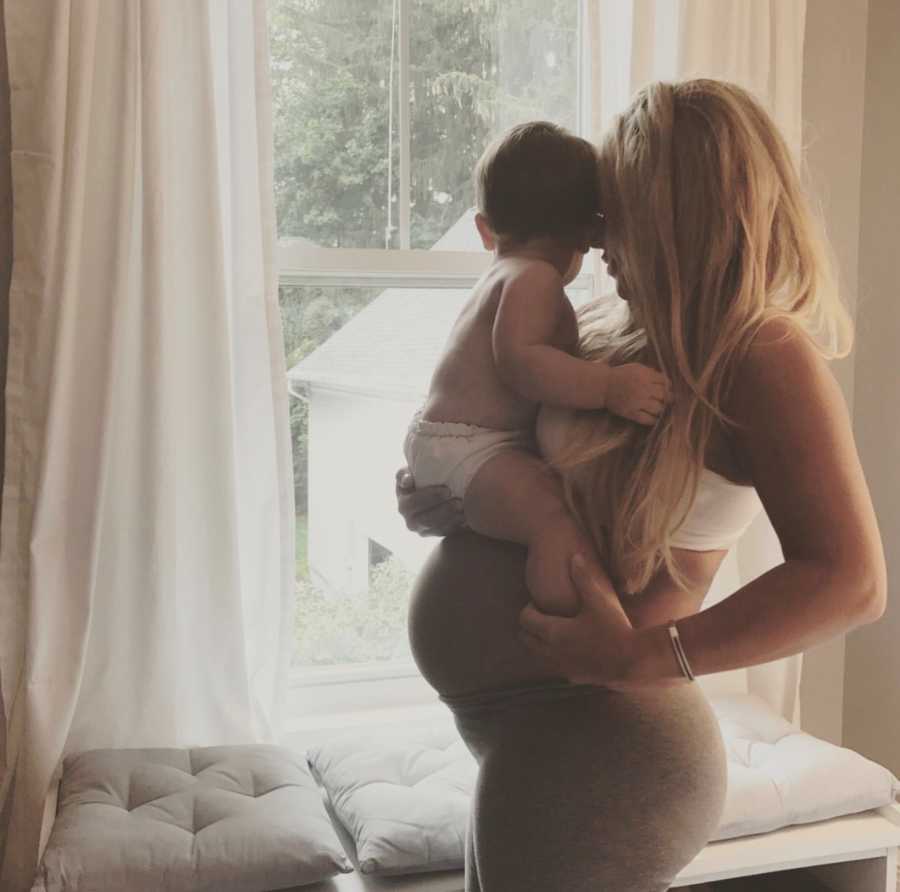
It took ten days for the test results to come back, and on my 36th birthday, an unexpected call came in. The Saturday on-call doctor at my Obstetrics clinic, whom I knew well, called to tell me that our baby was reasonably certain to have Down syndrome. I had already accepted this and given myself fully to what was part of my life’s journey.
After the diagnosis, it was appointment after appointment. I was learning so much about this baby’s body and still had no idea of its gender. The heart defects were Atrial Septal Defect (ASD) and Ventricular Septal Defect (VSD). We then saw ‘a shadow’ over an aorta. We were told it was hard to see things perfectly through an echocardiograph of our baby in the womb and the aorta was most likely fine. My heart knew differently, but I liked the sound of ‘it’s most likely fine.’
At around 32 weeks a baby swallows, and we can follow the amniotic fluid processed to make sure there are no defects in the digestive tract. I decided in my mind there were no more defects, and carried on with everything else I had to deal with. This child will have Down syndrome and will need open heart surgery between 3 to 5 months after birth. That was more than enough to deal with. We went to to the ultrasound and she was lacking a full connect in the digestive track. Our baby’s own stomach bile wouldn’t pass.

Immediately after birth, a tube would need to be placed to pull the bile out since our baby would not be able to complete digestion. That was it! I’m pretty sure I cried on the way home. Sometime afterward, I was having computer issues and while walking to my husband’s home office for help, I lost it. That was my last straw. Before I could fully make it into the office, I smashed my computer on to the floor and stomped on it over and over again screaming and crying. Picturing myself in that moment now brings tears to my eyes.
Then the day arrives. I woke up with labor pains two weeks after Kai’s first birthday. I’m ready! We are going to rock this whole situation. I even prepared myself for the fact they will rush the baby to the Boston Children’s Hospital Newborn Intensive Care Unit (NICU) soon after birth. I arrive at the hospital and I am pretty sure I will deliver in triage.
Not long after getting into the delivery room, Kitty Cosette Ola enters the world! Finally, a girl!
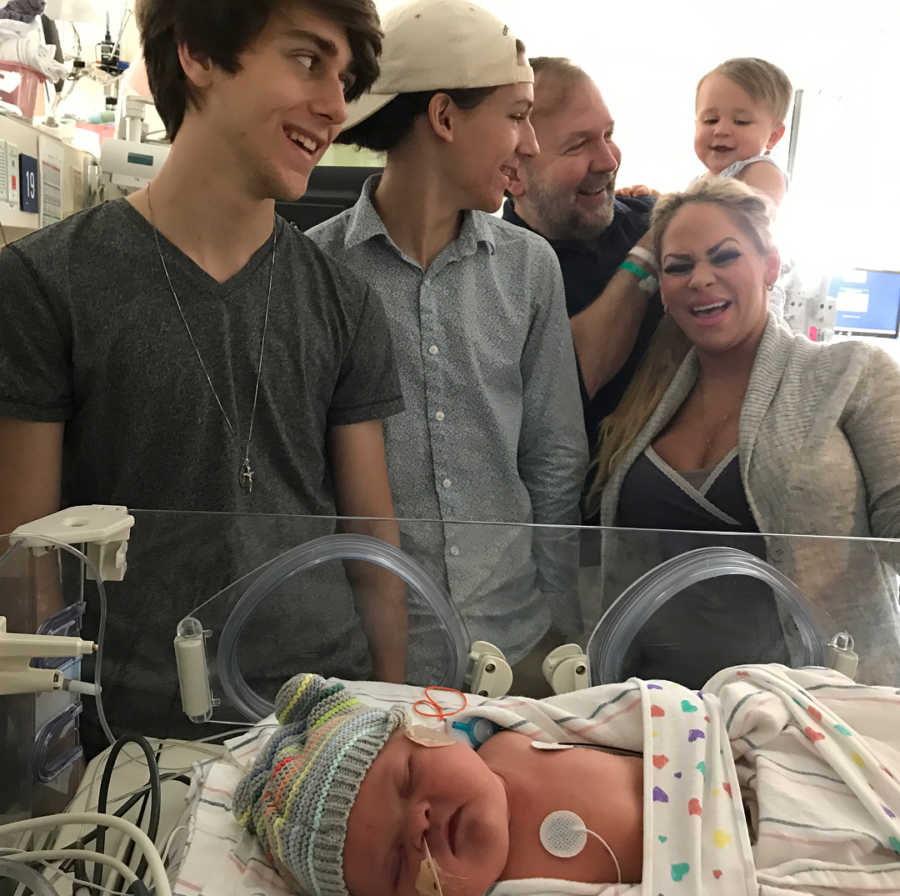
During the labor I remember praying through the contractions, ‘Please God save this child!’ She came out so beautifully. Her eyes blinking to see all around her. The most alert baby I’ve ever seen in all my life. She had the tiniest mouth with the most perfect shaped red lips. She was beautiful!
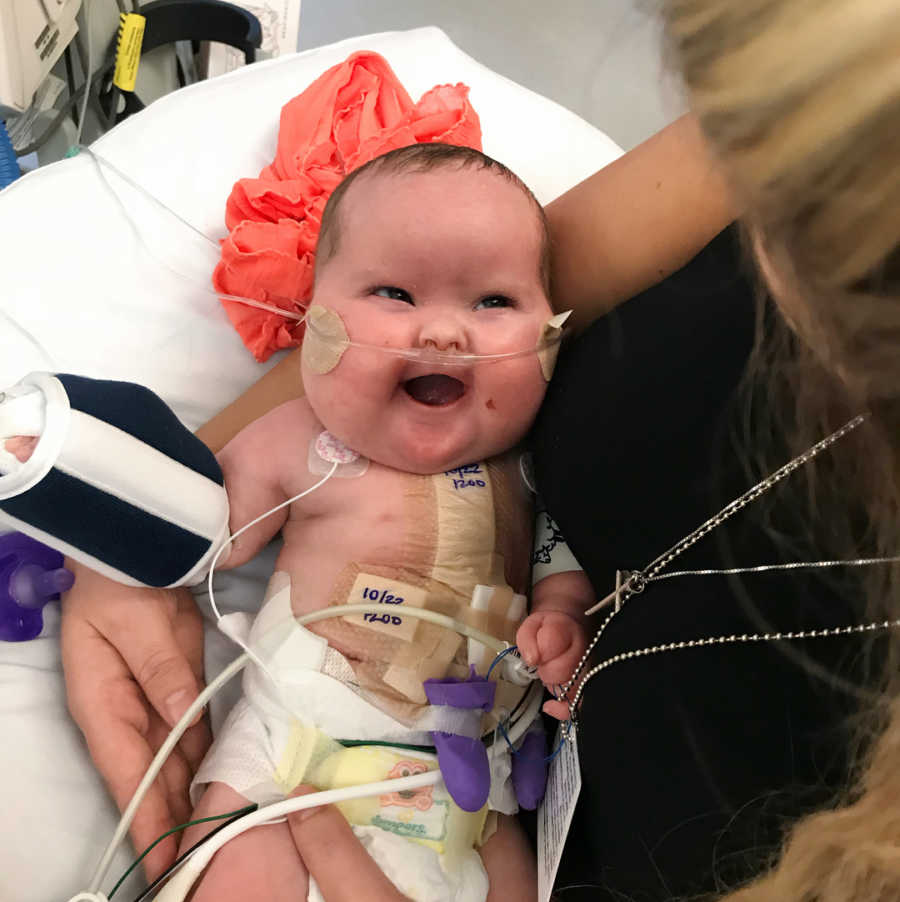
I could feel my eyes shifting around examining every inch of this perfection. She was the smartest most alert newborn I’ve ever seen. I was amazed and decided she would be just fine. I only had her 15 minutes before they whisked her away to the Children’s Hospital. I was excited at all this girl had to bring to my life.

She was placed on intravenous (IV) nutrition, and at five days old she had her intestinal repair. The aorta was indeed narrowed and needed to be cut out and sewn together at eight days old. I think the first five days were the longest of any. After the intestinal surgery, we were now a cardiac baby! Between the two surgeries, her ammonia levels skyrocketed, and we received a midnight call this could be deadly or cause brain damage.
Within those first few days she was also having low blood glucose levels. We were told this could be common in newborns and would work itself out. But when the high ammonia levels hit, our endocrine doctors knew this glucose issue wasn’t temporary. She has a condition called Hyperinsulinism Hyperammonemia or HIHA. While not related to Down syndrome, the Hyperinsulinism is opposite of diabetes and just as dangerous.
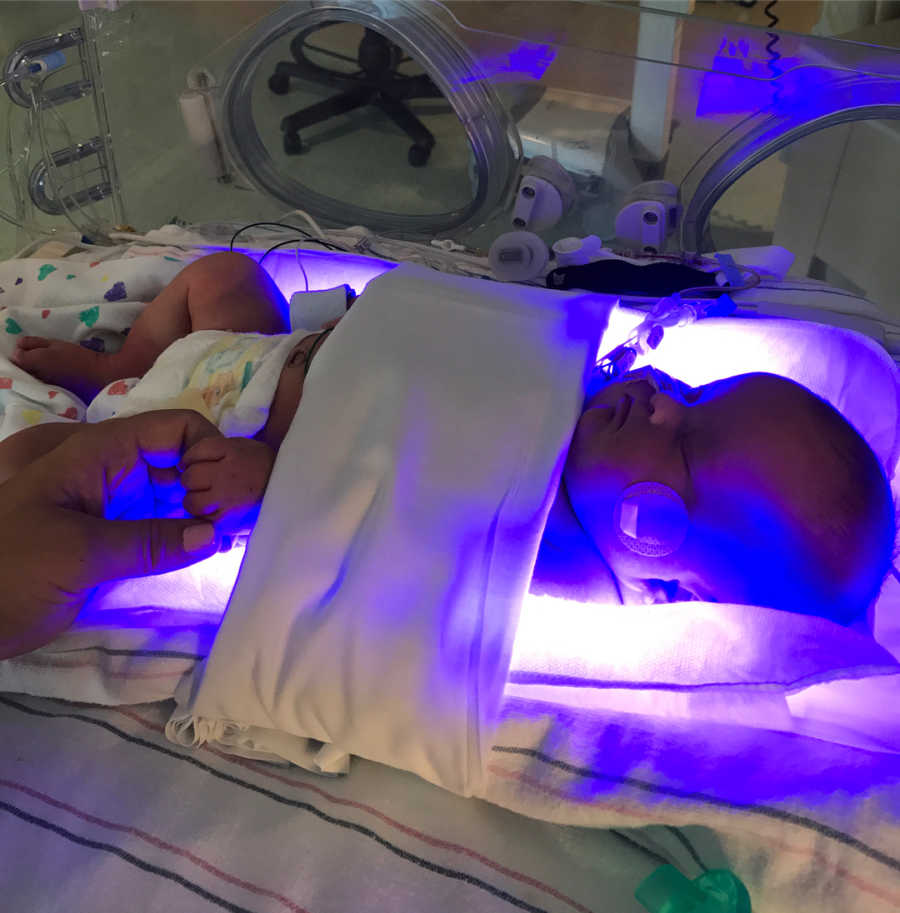
Kitty for one reason or another remained in heart failure. By five weeks, she needed open heart surgery, far sooner than her surgeon wanted. Through these weeks, I remained in a blur and ignorant to just what this endocrine disorder meant to her life, our lives, and the dangers it held. There was one medication that worked but with her heart defects it was deadly. Three times this medication nearly killed her.
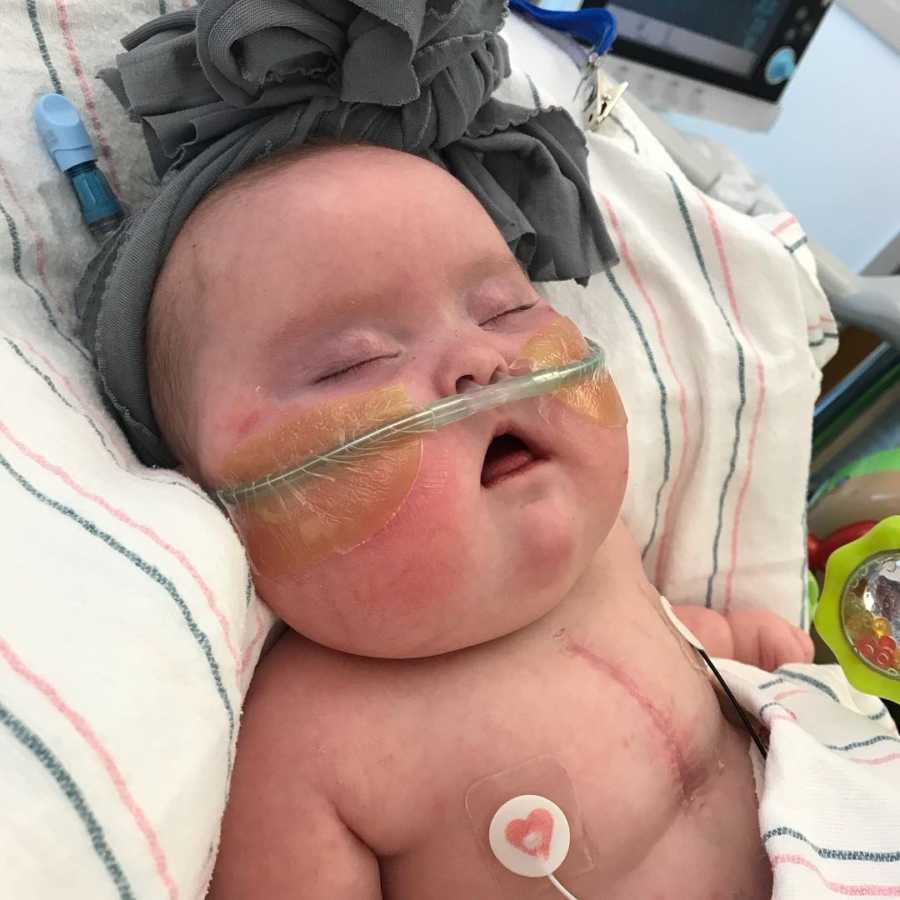
I received another middle of the night call that Kitty had a seizure. I was beside myself. I had been rooting for her, determined to take her home. I had then come to realize her body is far too complex. It’s one battle against itself after another. I climbed into the hotel shower where we had been staying to be near her while in hospital and sobbed. I had cried so little through it all. I stayed so optimistic and wanted to be approachable to the doctors and nurses and seemingly sane, although I felt my grip on mental health slipping away.
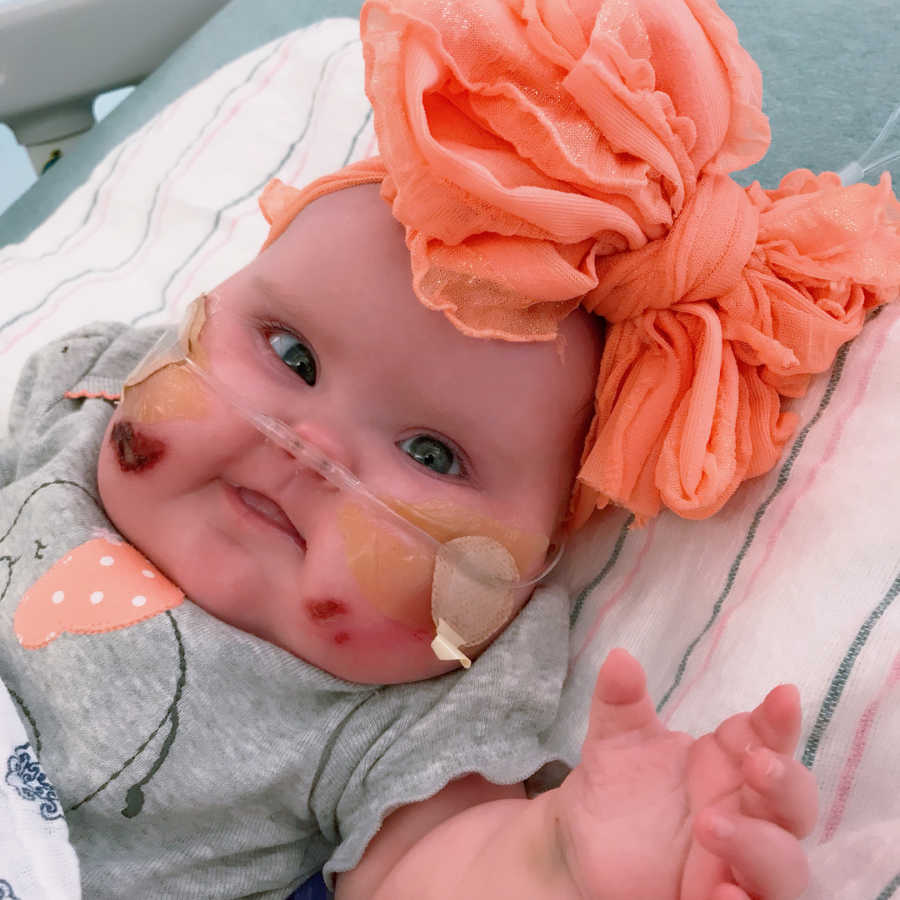
As I stood in that shower and cried I prayed, ‘God, if you’re going to take her, please take her now. I am giving her up to you. I know she is not mine, but first yours. Please don’t keep me in pain. If she’s going, take her now.’ That was the hardest prayer I’ve ever prayed. That was the saddest moment of my life. I never pictured myself in such a place with any of my children that I may no longer have them.
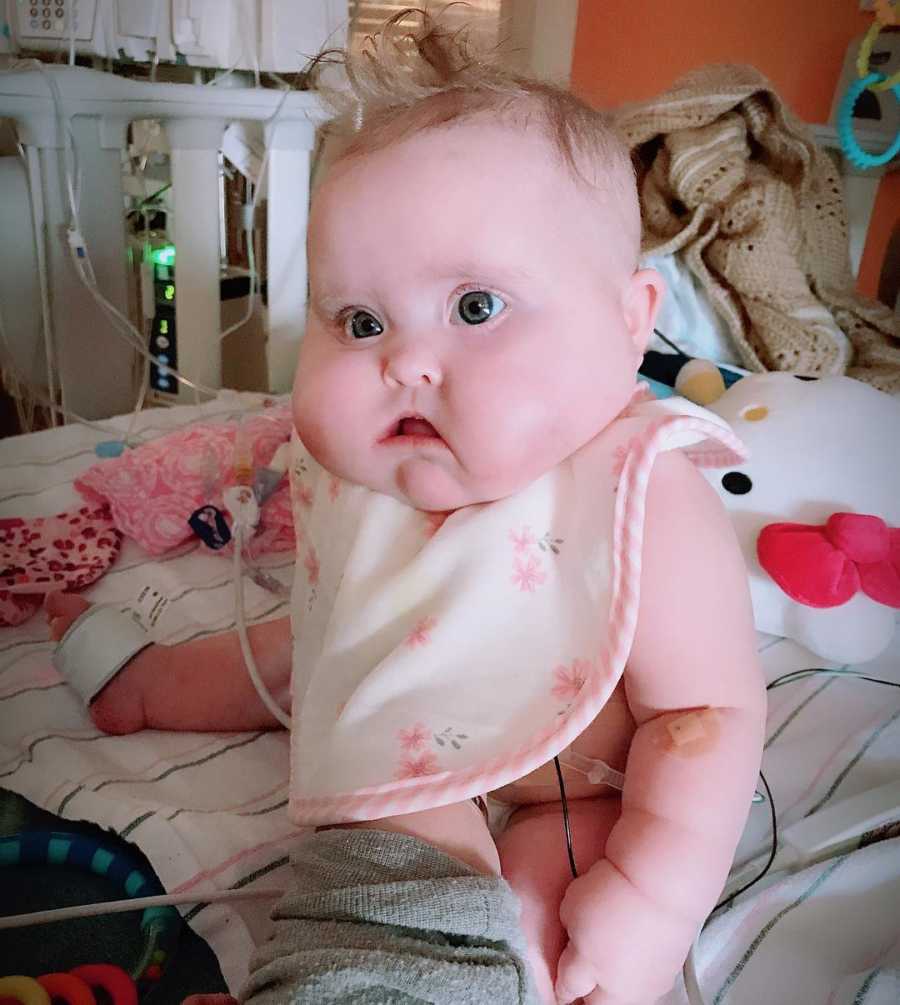
We transferred to Children’s Hospital of Philadelphia where her body finally accepted her endocrine medication. We were discharged and able to go home, but Kitty didn’t stay home long. We know while she is little, she will be in and out of the hospital when she catches an illness. She will outgrow these days, and in the meantime, her brother Kai will mature and grow into her own playmate who keeps her company during hospital stays, and that thought makes me smile.

She shows me the beauty of the world. Through heart failure, low glucose, Down syndrome and near death, she smiles! When she needs to be heard, she doesn’t cry, she screams out! She is the fiercest little woman I’ve ever met. She’s made the praying pray, and the non-praying pray, and the no-longer-praying pray. God moved mountains through her. The human heart can be the biggest mountain God ever has to move.”
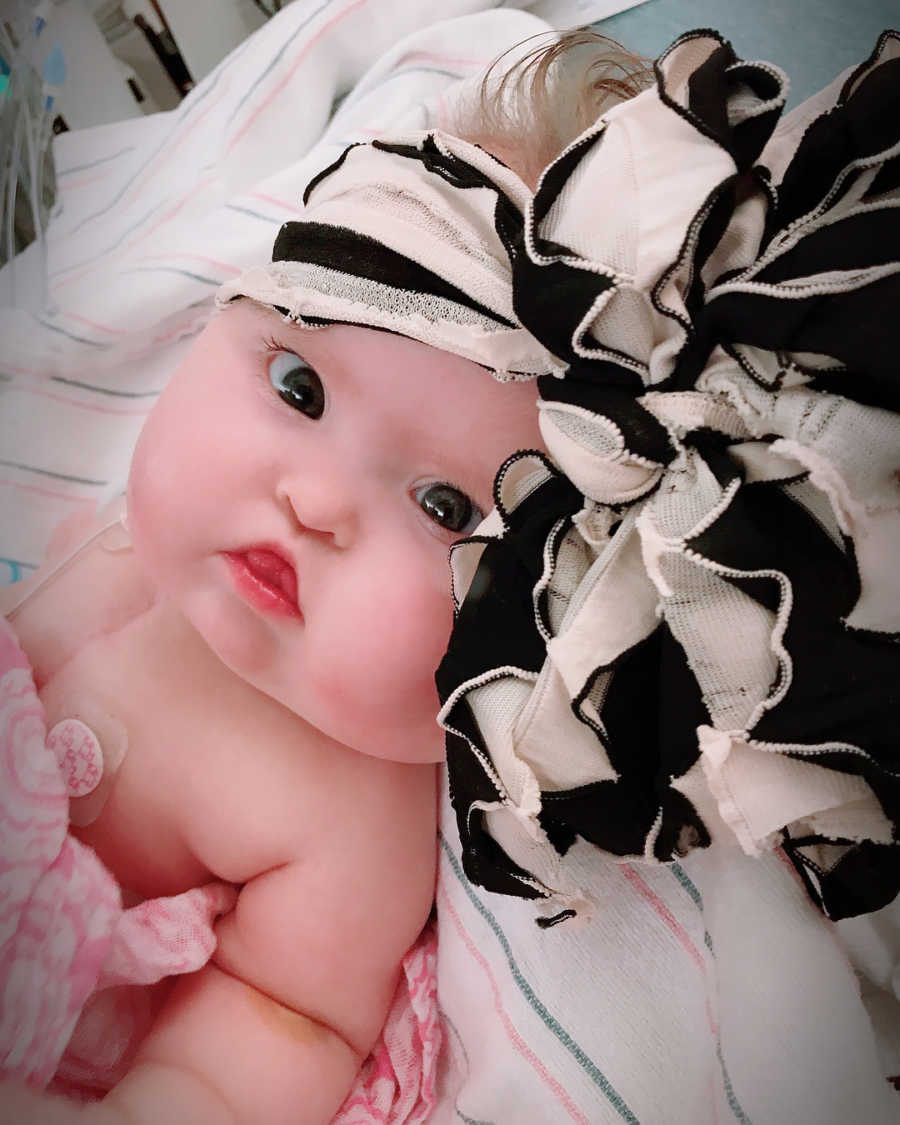
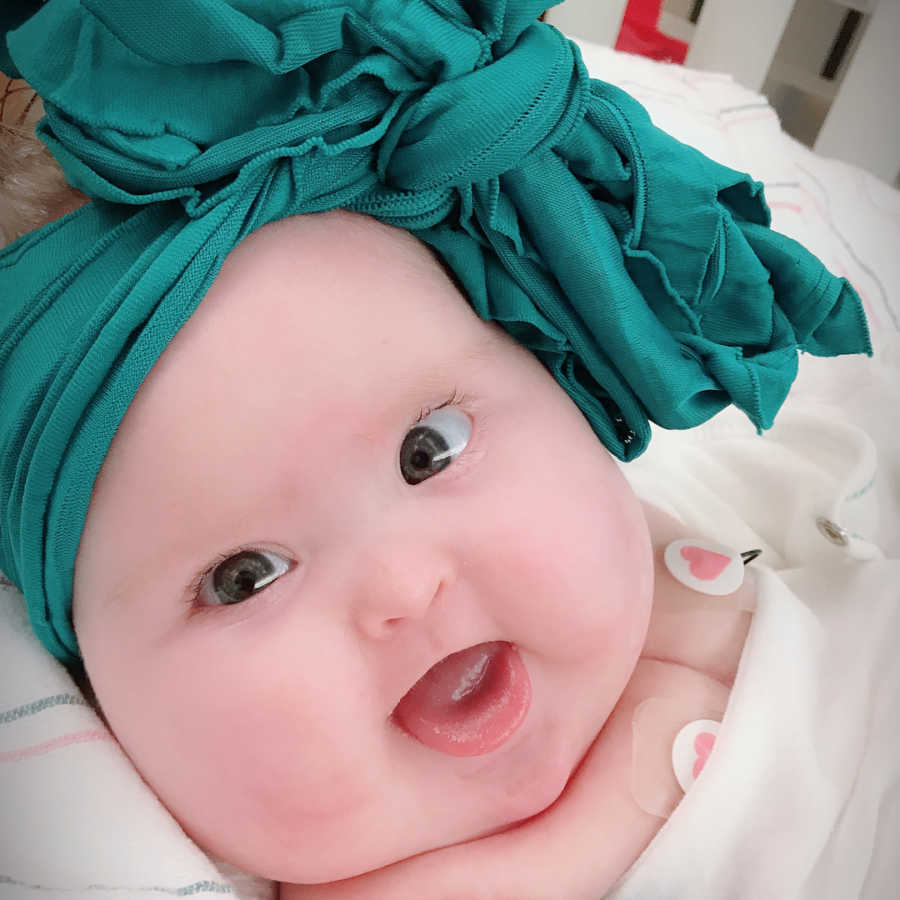
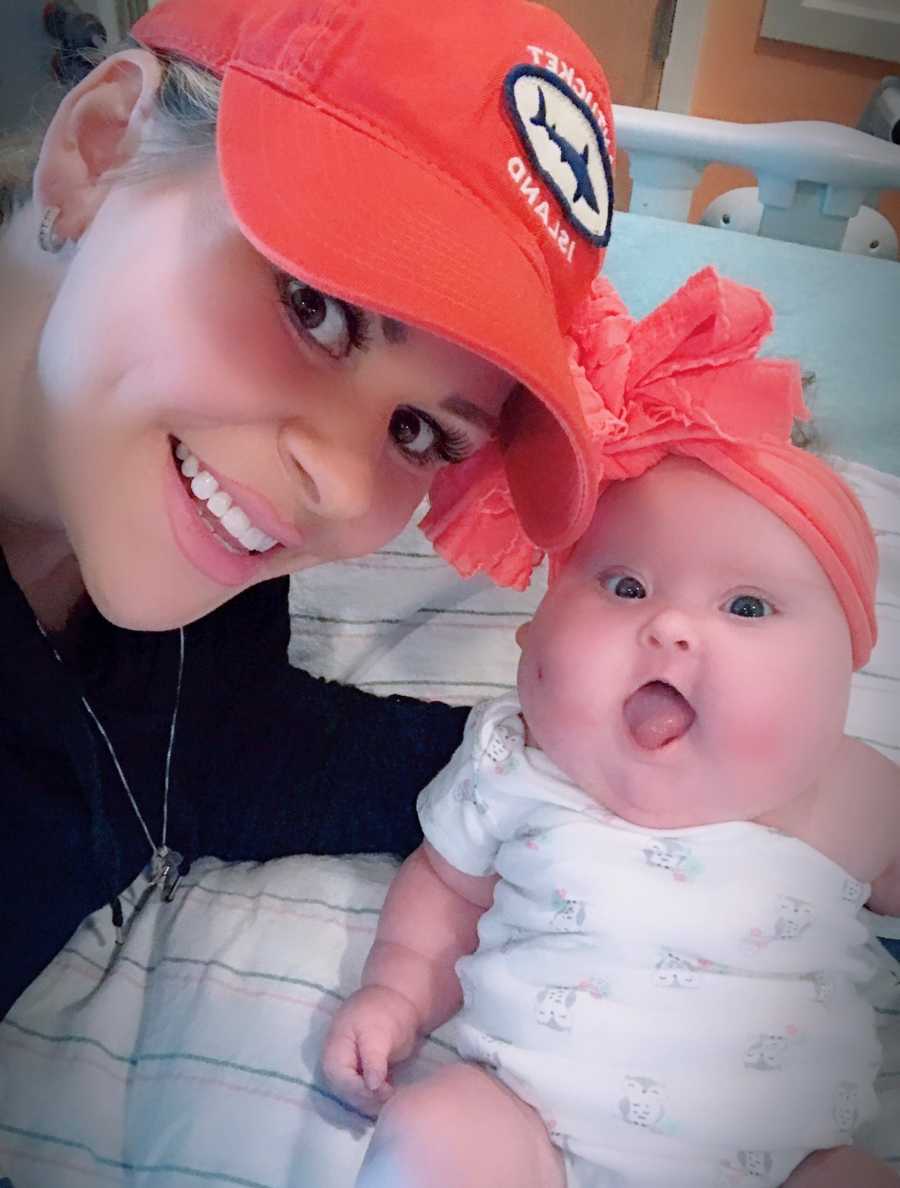
‘She was stunning. She was angelic. How could she look so perfect, and be so sick?’
This story was submitted to Love What Matters by Bonnie Witaschek, 36, of New England. Submit your story here, and subscribe to our best love stories here.
Please SHARE this story with your friends and family to raise awareness about congenital heart disease.

